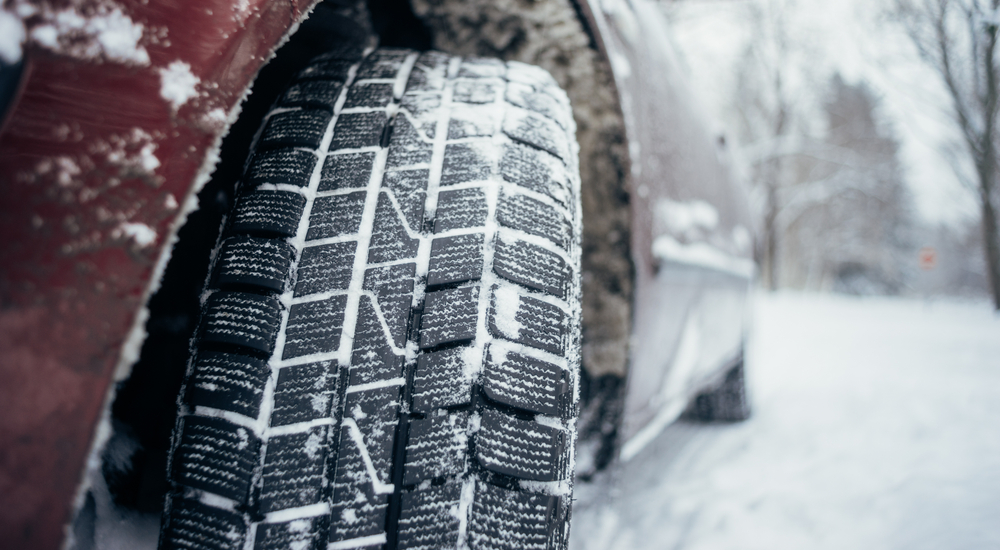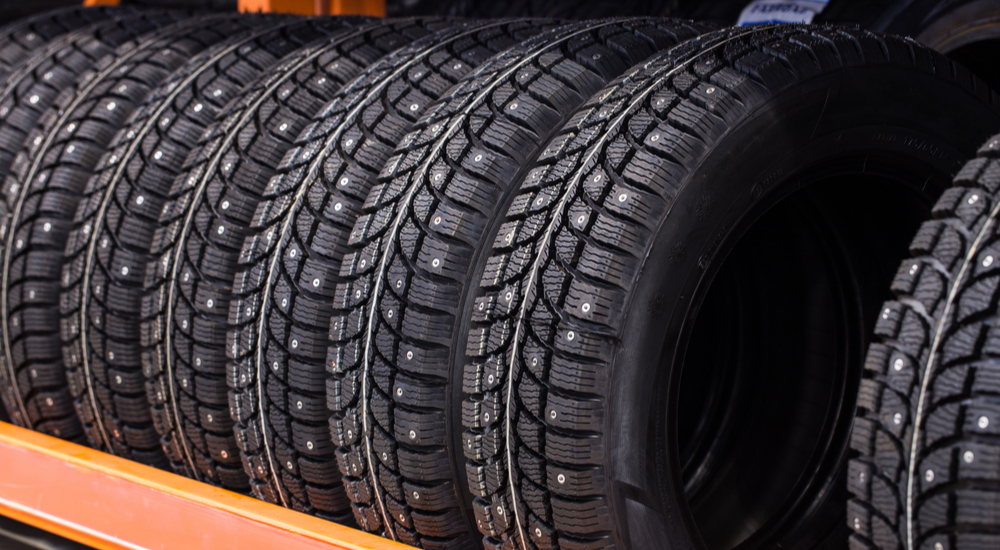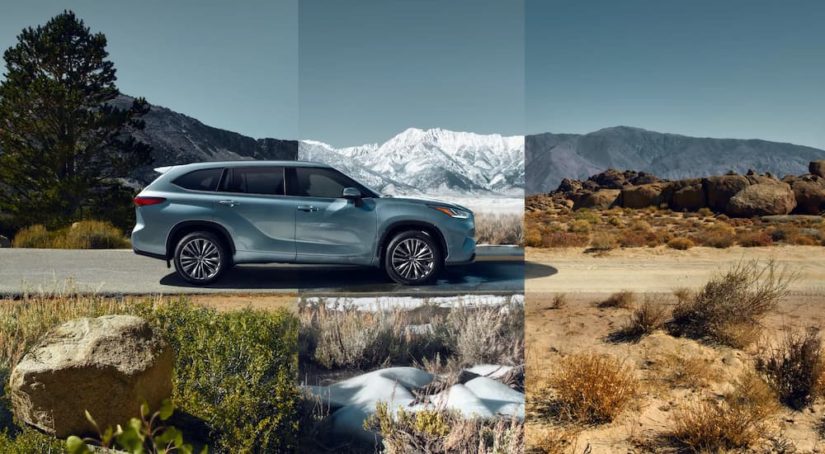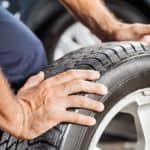Sometimes called snow tires, winter tires are one of the most important things you can get on your vehicle. The old saying goes: the tires are the only part of your vehicle that touches the road. That’s true (hopefully) and reinforces the role that your tires play – they connect your vehicle to the road, and all of your control over your vehicle happens at the tires. Winter tires ensure you get to maintain that control when the temperature drops and snow and ice become a daily factor on the road. However, there are a few things to consider before punching “winter tires near me” into Google and buying the first option that comes up.
What are Winter Tires?
Let’s start with the basics. Winter tires are exactly what they sound like: tires designed to be used specifically during the winter. There are a few things that set them apart from other kinds of tires you can find, like all-season, summer, and performance tires. Each of these things makes them uniquely effective at handling winter weather and driving conditions.
For one thing, winter tires are designed with wide, deep grooves in them, and the lugs – the parts of the tire between the grooves – are wide. The lugs are where you get traction – they’re the part of the tread that actually comes in contact with the road. This design isn’t just to look neat or to make them seem different; the wide grooves are good at scooping up snow and slush, moving it away from the road so that the lugs can make contact and give you traction in sloppy conditions.
In addition, winter tires often have something called “sipes” that help with traction even more. Sipes are small slits that look like narrow, thin grooves cut into the surface of the lugs. At first glance, these might seem decorative, but what they do is effectively break the lugs up into smaller surface areas with more edges to them, allowing your tires to grip the road better when things are wet and icy.
Finally, winter tires aren’t just designed with differences in their lugs and grooves – they’re actually manufactured using rubber that is formulated differently from other tires. In order for tires to give you the best traction possibly, they grip the road – this happens because the tires are soft and pliable. As you drive, your tires basically shape themselves to the surface of the road to make the best contact possible and give you great traction.
Most tires are made from rubber that is soft and pliable in warm weather, allowing for great traction even when there’s rain. The problem, however, is that when the weather gets cold – dropping below about 45 degrees – the rubber in the tires becomes firm and hard. Winter tires are made using rubber that has been formulated to remain soft and pliable even in cold weather. This ensures they’re able to grip the road as effectively as possible, providing you with excellent traction in cold temperatures, whether the road is wet or dry.

What About All-Season Tires?
Despite their name, all-season tires aren’t always the best option in every season. If you live somewhere like Southern California, and the temperature pretty much never goes below the 40s, then all-season tires are probably perfect for you. For those of us in northern states, however, all-season tires can be great throughout the summer and parts of the spring and autumn, but they’re not made for winter months or the coldest parts of other seasons.
This really comes down to all of the factors I mentioned above. All-season tires are designed with grooves and lugs made for dry roads or wet conditions due to rain; they don’t work well at handling intense slush, snow, or ice. They don’t have sipes that are designed for extreme conditions like winter tires are. And, ultimately, all-season tires are made using rubber meant for warmer conditions, whereas the rubber in winter tires is designed to handle the coldest temps.
Do I Really Need Winter Tires?
That all depends on where you live and what your winter is like. As I said, if you’re in parts of Arizona, Nevada, Texas, or other areas that don’t get very cold, then you don’t need winter tires. On the other hand, if you live somewhere that gets snowstorms, serious winter weather, and where the temperature drops below 45 degrees for extended periods of time, then yes, you do need winter tires. Otherwise, you’re opening yourself up to the risk of a serious collision as winter greatly reduces your traction.
When Do I Need to Switch My Tires?
This really comes down to where you live and when your temperatures start to change. Due to the way the rubber in tires works, that 45-degree temperature I’ve referenced several times really is the magic number. You can check an almanac or various websites to see when, in general, the average daily temperature in your area is below 45 degrees. Using this, you can then switch to winter tires a week or two before that – then switch back to all-season tires about a week after the temperatures go back up.
If you don’t want to figure all of that out, however, then there’s a pretty simple general rule you can follow. The conventional wisdom is you should switch to winter tires in November, between Halloween and Thanksgiving, and then change back to all-season tires in April, around Tax Day. This might not be perfect for you, but mid-November to mid-April is a great way to remind yourself when you should be getting your tires swapped out.

What About Studded Tires?
Not all winter tires are studded, though some are – so you’ll often see studded winter tires available, especially if you live somewhere that gets very cold. These tires have small metal studs built into some of their surface tread, which can help dig into ice. If you live in an area that’s good about clearing roads after a storm, then you probably don’t need studded winter tires. On the other hand, if you tend to encounter a lot of hard-packed snow or ice while on the road, then studded tires can definitely help. Keep in mind that many states have limits on when you can use studded tires, so check the laws and regulations for your state to make sure you’re allowed to use them.
Should I Get Tire Chains?
Tire chains are, essentially, a completely separate option – don’t think of them as a replacement for winter tires. If you often deal with deep snow and ice that doesn’t get cleared off quickly, then chains can be a great way to boost your vehicle’s traction after a storm. Most people really don’t need chains these days, though having them in your trunk just in case isn’t a bad idea. Just remember that chains can damage your tires or wheels if not used properly, and they offer terrible traction on dry roads – only use them on deep snow and ice.
While not everyone needs winter tires, if you live in an area where you should use them, then they can make a huge difference in keeping you safe. Just remember to get them before the weather turns really rough, and swap them out as things start to warm back up. With the right tires, it’s easy to stay safe and in control, no matter what Mother Nature throws at you.



